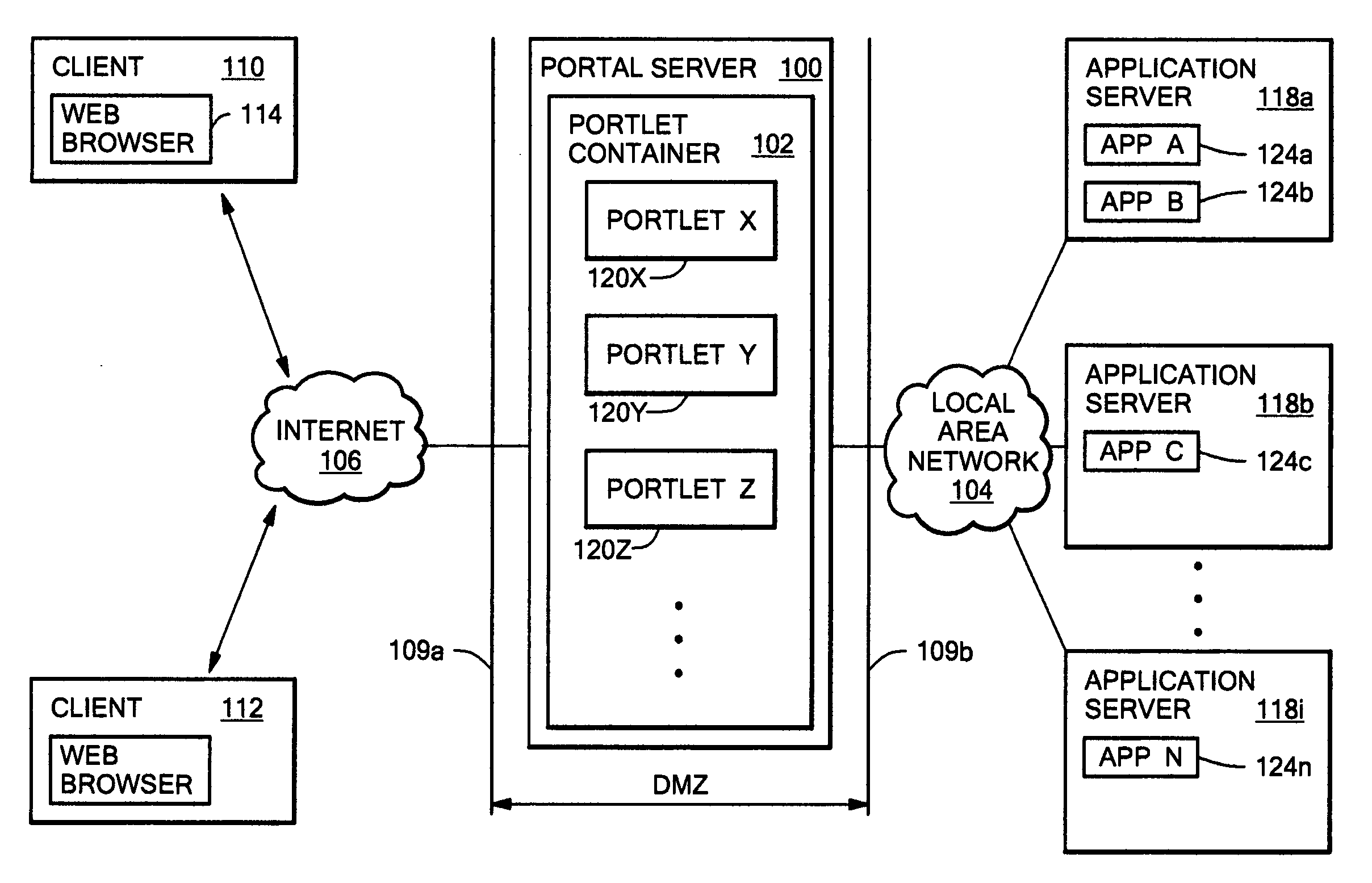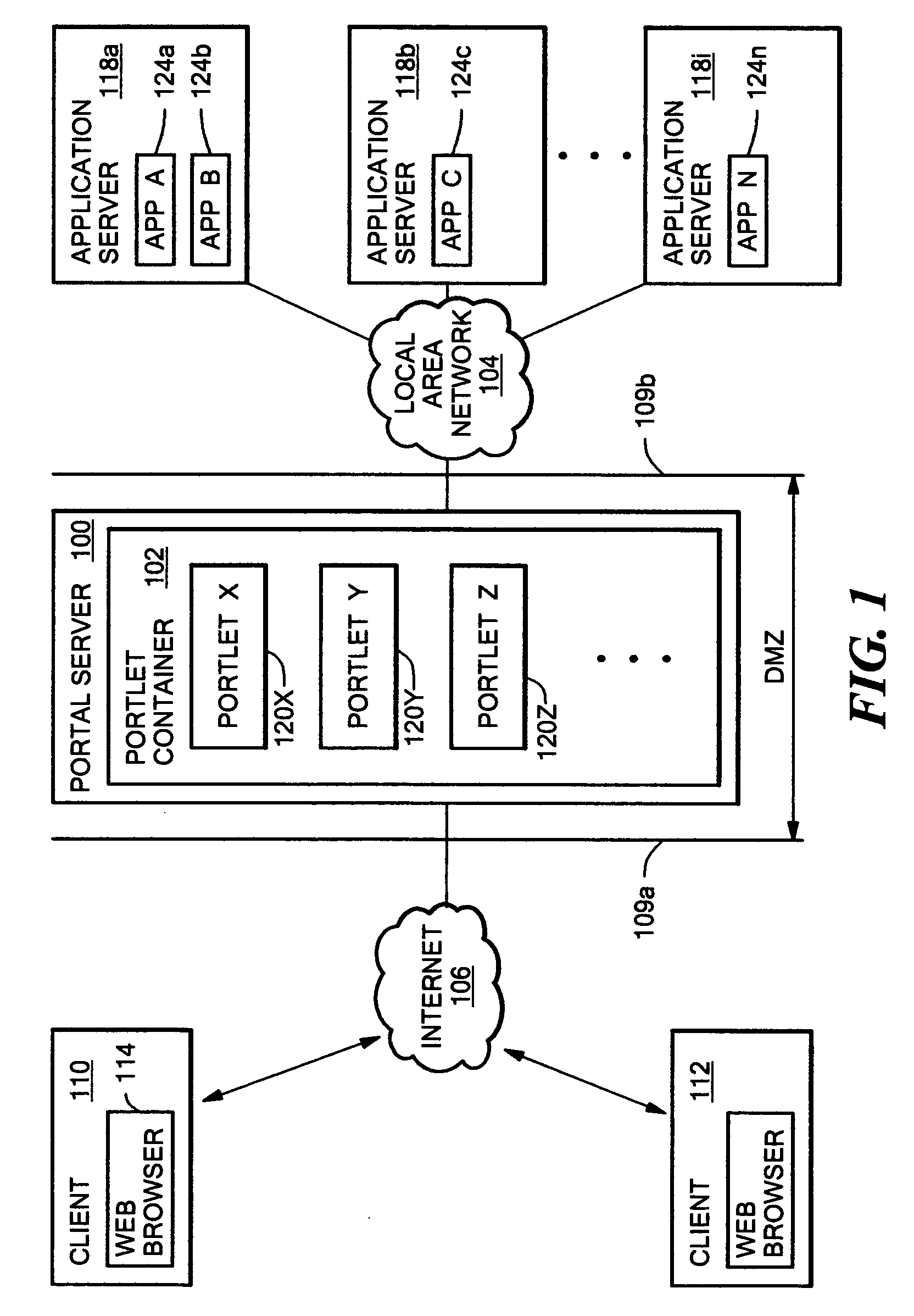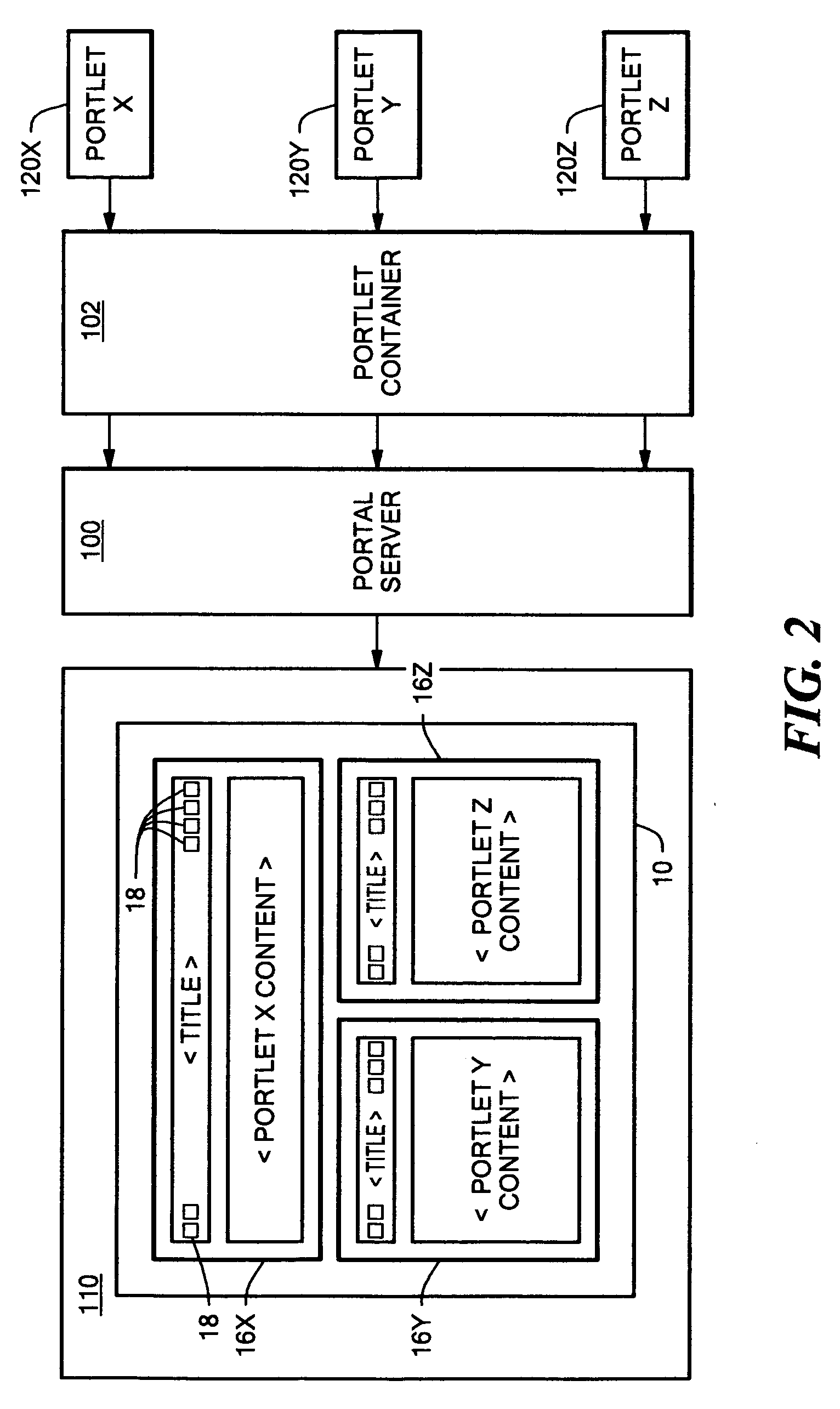Reverse proxy portlet with rule-based, instance level configuration
a reverse proxy and instance level technology, applied in the field of data processing, can solve the problems of not being able to change the configuration rules for a particular application, unable to cope with the dynamic creation of hypertext references (hrefs), and preventing the outside client from obtaining direct, unmonitored access to the real content server, etc., to achieve the effect of reducing administrative overhead, reducing overhead, and reducing flexibility
- Summary
- Abstract
- Description
- Claims
- Application Information
AI Technical Summary
Benefits of technology
Problems solved by technology
Method used
Image
Examples
Embodiment Construction
[0023] In the following description, reference is made to the accompanying drawings which form a part hereof and which illustrate one implementation. It is understood that other implementations may be utilized and structural and operational changes may be made without departing from the scope of the invention.
[0024]FIG. 1 illustrates a block diagram of a computing environment including an implementation of the invention. A portal server 100 comprises a portlet container 102 which manages a plurality of portlets 120X, 120Y, 120Z . . . , and connects to two networks 104 and 106. It should be understood that portal server 100, clients 110, 112 and application servers 118a, . . . 118i comprise any type of device capable of accepting input, providing output, and communicating with another device. To this extent, portal server represents any type of computerized system for providing access to a Web site (e.g., a Web server computer system), client systems 110, 112 represent any type of c...
PUM
 Login to View More
Login to View More Abstract
Description
Claims
Application Information
 Login to View More
Login to View More - R&D
- Intellectual Property
- Life Sciences
- Materials
- Tech Scout
- Unparalleled Data Quality
- Higher Quality Content
- 60% Fewer Hallucinations
Browse by: Latest US Patents, China's latest patents, Technical Efficacy Thesaurus, Application Domain, Technology Topic, Popular Technical Reports.
© 2025 PatSnap. All rights reserved.Legal|Privacy policy|Modern Slavery Act Transparency Statement|Sitemap|About US| Contact US: help@patsnap.com



